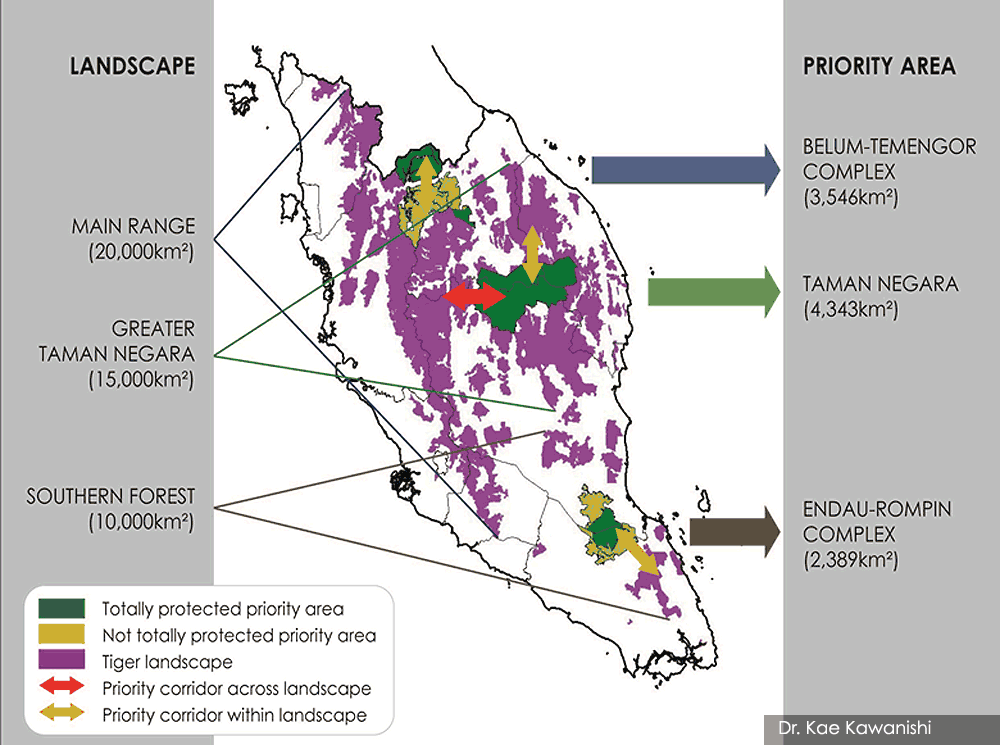LETTER | The Malayan tiger, a subspecies of the tiger found only on the Malaysian peninsula, is on the brink of extinction.
Globally, 97 percent of the world’s tigers have been lost in the last century due to habitat loss and poaching.
While the Bengal and Siberian subspecies of the tiger are recovering in numbers due to strict protection, the Malayan tiger population has plummeted over the past two decades. No local tiger landscape has been spared; even highly protected national parks such as Taman Negara have experienced a significant drop in wild tiger numbers.
The official estimate of Malayan tigers remaining in the wild as announced this year by the government is “less than 150”. This follows a RM18 million, four-year national tiger survey that began in 2016.
As a conservation biologist who has been tracking the extinction process of the tiger in Peninsular Malaysia for the past quarter of a century, I estimate the population size of the Malayan tiger over one year of age likely to be 100 or less.
One challenge facing tiger conservation efforts is that wild tigers are not found in one place but are scattered over large and increasingly fragmented forest complexes across the peninsula.
Created over a decade ago, the federal government’s Central Forest Spine Master Plan is a master plan to connect 5.3 million hectares of Central Forest Spine with 37 forest linkages. Its realisation is of crucial importance for the survival of not only tigers and other wildlife but also for the health and wealth of the nation.
It provides ecological services such as flood mitigation, carbon sequestration, water purification, pollination, and livelihood for local communities. Yet despite its importance and urgency particularly in light of climate change, it is yet to be fully realised.
Playing a pivotal role in forest conservation and biodiversity preservation is Pahang. The state has the largest forest coverage in West Malaysia and the largest tiger population.
However, no single forest or state in Malaysia is large enough to support a viable population of tigers, making connectivity of critical importance in the survival of the species.
A viable population of Malayan tigers is only possible when Pahang protects the country’s most important ecological corridor while the federal government’s initiatives put more boots on the ground to protect tigers from poachers.
Identified in the master plan as Primary Linkage 1, it is found along the Sungai Yu watershed in the Kuala Lipis district of Pahang. The Sungai Yu corridor is the final linkage connecting the two largest forest complexes in Malaysia, namely the Titiawangsa Main Range in the west and the Taman Negara Range in the east (see map).

When tigers can move safely across the Sungai Yu corridor, Malaysia has a fighting chance of having a viable population of Malayan Tiger that can survive into the next lunar Year of the Tiger.
Tigers can survive in sustainably logged large forests so long as they can disperse safely to adjacent forests.
Forest fragmentation due to highways and logging roads is a threat to the viability of the tiger because roads and forest edges bring poachers closer to tigers and their prey.
KAE KAWANISHI is a wildlife biologist.
The views expressed here are those of the author/contributor and do not necessarily represent the views of Malaysiakini.

